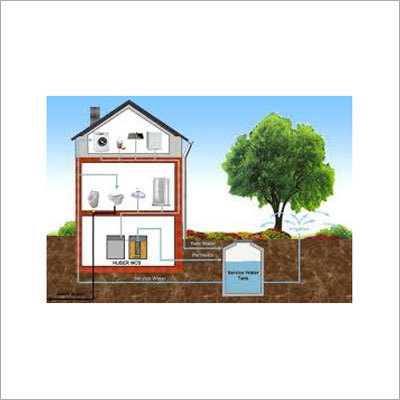| Water used in your home is classed into two broad categories – grey and black water. Black water must be sent into the sewerage system, but grey water can potentially be reused in your home. Black water includes: • Everything flushed through a toilet
• Water from your dishwasher (it contains a lot of grease, harsh detergents and other solids) Grey water includes: • Water from the sinks, dishwashers
• laundry/washing machine, bathroom sinks
• Tubs and showers.
Typically, 50‐70% of household wastewater is grey water. Of course, if you use a composting toilet, 100% of your household waste water is black water. Benefits of Grey water Recycling For Irrigation • Reduce fresh water use - When the weather is warm, about half of the water consumed by the average household in North America is for outdoor use. Capturing the indoor grey water for use outdoors can cut water usage in half. • Reduce strain on septic system or treatment plant – Grey water makes up the majority of the household wastewater stream, so diverting it from the septic system extends the life and capacity of the system. For municipal systems, decreased input means more effective treatment coupled with cost savings. • Develop otherwise unsuitable real estate - A grey water recycling system, along with the use of composting toilets, can enable the development of property that is unsuitable for a septic system. • Groundwater Recharge – Grey water recycling for irrigation replenishes groundwater, helping the natural hydrologic cycle to keep functioning. • Plant growth – Grey water can support plant growth in areas that might otherwise not have enough water. | 
